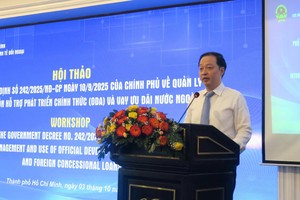To avoid losses, most commercial banks have asked the State Bank of Vietnam (SBV) to lift the deposit interest cap of 10.5 percent and extend the application of negotiable interest rates to short-term loans.
Bank representatives made their proposal at a meeting between the Vietnam Bankers’ Association and 22 commercial banks in Ho Chi Minh City on March 9 to discuss the implementation of SBV’s Circular 07 allowing banks to apply negotiable interest rates for medium- and long-term loans.

Most commercial banks agreed that the application of negotiable interest rates would maintain supply and demand; provide businesses with more access to loans; facilitate banks in expanding credit grants to development investment projects; and improve banks’ income.
However, they proposed that negotiable interest rates should also be applied for short-term loans to meet the increasing demand of businesses for such loans and to help banks improve their revenue.
In fact, medium- and long-term lending currently accounts for only about 30 percent of the total lending balance at commercial banks, they said.
Given that the policy on negotiable interest rates on loans has been applied, maintaining the 10.5 percent ceiling interest rate per year on deposits is inappropriate, most banks said.
Many commercial banks said they currently must mobilize capital at 10.5 percent per annum, but if counting the compulsory reserve, reserve for liquidity, and management fees, the price of banks’ capital will be higher than 12 percent per annum.
Therefore, it is impossible to make short-term loans at the 12 percent interest rate per annum as regulated by the central bank, they said.
They also pointed out that the deposit interest rate on the open market has been higher than 10.5 percent and that on the inter-bank market, the rate has also increased to 12 percent.
To avoid losses, many banks now only provide medium- and long-term loans, even when there is high demand for short-term loans.
With the ceiling rate of 10.5 percent on deposits and the 12 percent interest rate on short-term loans, many banks said they were left with no choice but to charge more fees on borrowers and seek other measures to prevent losses.
Prior to the meeting, the general director of a State-owned bank said, “We still have to manage somehow, because if we give short-term loans at that rate, we will surely incur losses.”
























